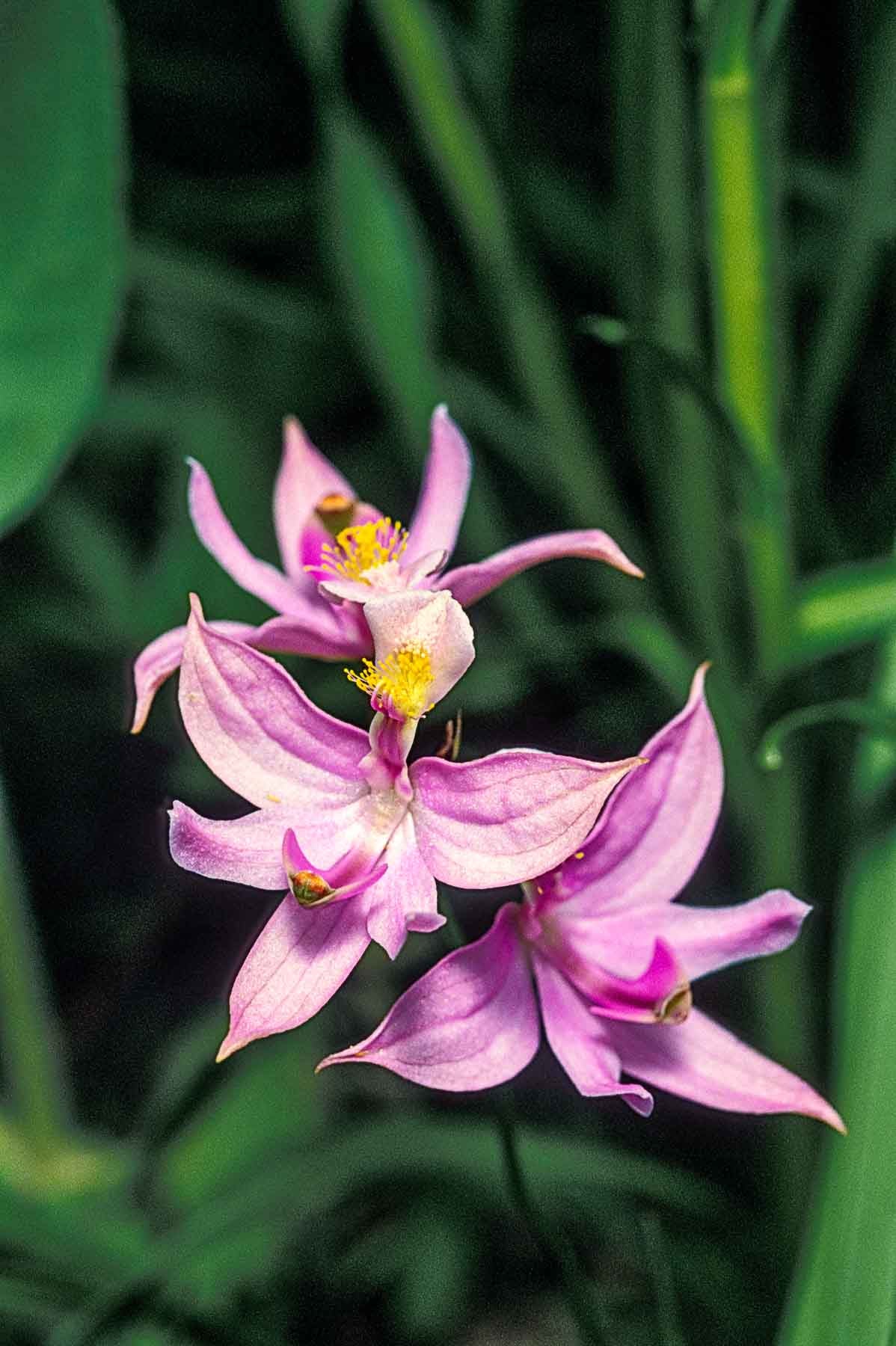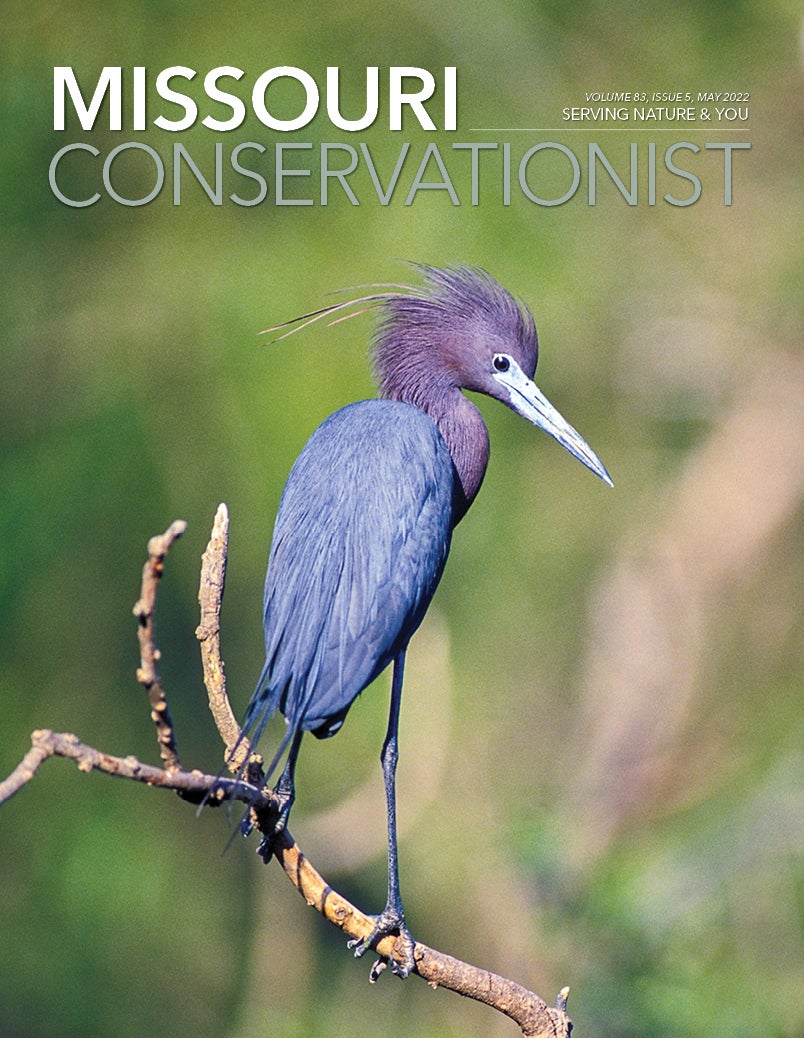Apply for Elk and Bear Hunting
Permit applications open May 1, drawings occur July 1
MDC will offer five permits to hunt bull elk in Missouri this fall, with at least one permit designated for qualifying area landowners and the remaining permits for the general public.
MDC will also offer 400 permits for the taking of a maximum of 40 black bears during the second Missouri black bear hunting season this fall. At least 10 percent of black bear permits will be allocated to qualifying area landowners.
Only Missouri residents who will be at least 11 years old by the first day of the hunt for which they are applying are eligible to apply for elk and bear permits during the application period, May 1–31. All permits will be assigned through a random drawing.
For more information on elk and elk hunting in Missouri, visit mdc.mo.gov/elkhunting.
Learn more about black bears and bear hunting in Missouri at mdc.mo.gov/bearhunting.
Apply for the bear permit and elk permit random drawings May 1–31 online at mdc.mo.gov/buypermits, through MDC’s free MO Hunting app, through a permit vendor, or by calling 1-800-392-4115. Results of the permit random drawings will be available online by July 1.
Discover Weird Wildlife Facts with New Publication
The mammals, birds, reptiles, amphibians, and insects of Missouri are diverse, remarkable, and sometimes just plain strange. From the American beaver, whose teeth are chainsaw-sharp and never stop growing, to box turtles, who partially freeze over the winter and still survive, it’s a weird, wild world out there. You can now learn more with MDC’s new book, Strange but True.
Adapted from the pages of MDC’s award-winning children’s magazine Xplor, Strange but True is a 136-page, full-color book that offers more than 350 fun facts about Missouri wildlife at its strangest. Written by Xplor editor Matt Seek and illustrated by nature artist Mark Raithel, Strange but True is your guide to all the unusual, unique, and unbelievable stuff that goes on in nature.
Whether you’re a kid or a kid at heart, the Strange but True guidebook will have you laughing, scratching your head, and learning new fun information about Missouri’s native wildlife. The guidebook is now available for purchase for $8.95 (plus shipping) online at mdcnatureshop.com or at MDC nature centers around the state. To find a nature center near you, visit short.mdc.mo.gov/4JV.
Sharing the Harvest
MDC thanks the thousands of Missouri deer hunters who donated 242,774 pounds of venison to the state’s Share the Harvest program this past deer season, including 5,053 whole deer. MDC also thanks the participating meat processors throughout the state who grind the donated deer meat into ready-to-use packages and the many sponsors who financially support the program.
The donated deer meat goes to local food banks and food pantries to help feed hungry Missourians all around the state. To get Share the Harvest venison, contact local food banks or food pantries.
Share the Harvest, which was started in 1992, is coordinated by MDC and the Conservation Federation of Missouri (CFM). Including this past season’s donations, the program has provided nearly 5 million pounds of lean, healthy venison to hungry Missourians.
For more information on Share the Harvest, visit CFM online at confedmo.org/share-the-harvest.
The Missouri Conservation Commission approved recommendations at its March 25 meeting for the upcoming 2022 migratory game bird hunting seasons and 2022–2023 waterfowl-hunting seasons.
Title
2022 Migratory Game Bird Hunting
Mourning Doves, Eurasian Collared Doves, and White-Winged Doves
Season: Sept. 1–Nov. 29
Limits: 15 daily and 45 in possession combined total for all three species
Hours: One-half hour before sunrise to sunset
Sora and Virginia Rails
Season: Sept. 1–Nov. 9
Limits: 25 daily and 75 in possession combined for both species
Hours: One-half hour before sunrise to sunset
Wilson’s (Common) Snipe
Season: Sept. 1–Dec. 16
Limits: 8 daily and 24 in possession
Hours: One-half hour before sunrise to sunset
American Woodcock
Season: Oct. 15–Nov. 28
Limits: 3 daily and 9 in possession
Hours: One-half hour before sunrise to sunset
Title
2022–2023 Waterfowl Hunting
Teal
Season: Sept. 10–25
Limits: 6 daily and 18 in possession
Hours: Sunrise to sunset
Ducks
Season:
- North Zone: Oct. 29–Dec. 27
- Middle Zone: Nov. 5–13 and Nov. 19–Jan. 8, 2023
- South Zone: Nov. 24–27 and Dec. 7–Jan. 31, 2023
Bag Limit: 6 ducks daily with species restrictions of:
- 4 mallards (no more than 2 females)
- 3 wood ducks
- 2 black ducks
- 2 canvasbacks
- 2 hooded mergansers
- 2 redheads
- 2 scaup for first 45 days
- and 1 scaup for last 15 days
- 1 mottled duck
- 1 pintail
Possession Limit: Three times the daily bag or 18 total, varies by species
Hours: One-half hour before sunrise to sunset
Coots
Season: Same as duck season dates in the respective zones
Limits: 15 daily and 45 in possession
Hours: One-half hour before sunrise to sunset
Snow Geese (White and Blue Phases) and Ross’s Geese
Season: Nov. 11–Feb. 6, 2023
Limits: 20 blue, snow, or Ross’s geese daily with no possession limit
Hours: One-half hour before sunrise to sunset
White-Fronted Geese
Season: Nov. 11–Feb. 6, 2023
Limits: 2 daily and 6 in possession
Hours: One-half hour before sunrise to sunset
Canada Geese and Brant
Season: Oct. 1–9 and Nov. 11–Feb. 6, 2023
Limits: 3 Canada geese and brant in aggregate daily, 9 in possession
Hours: One-half hour before sunrise to sunset
Light Goose Conservation Order
Season: Feb. 7, 2023–April 30, 2023
Limits: No daily or possession limits
Hours: One-half hour before sunrise to one-half hour after sunset
Methods: For the taking of blue, snow, and Ross’s geese during the Conservation Order, hunters may use shotguns capable of holding more than three shells and recorded or electronically amplified bird calls or sounds or imitations of bird calls or sounds.
Youth Hunting Days
- North Zone: Oct. 22–23
- Middle Zone: Oct. 22–23
- South Zone: Nov. 19–20
Limits: Same as during regular waterfowl season
Hours: Same as during regular waterfowl season
Requirements: Any person 15 or younger may participate in youth waterfowl hunting days without permit provided they are in the immediate presence of an adult 18 or older. If the youth hunter is not certified in hunter education, the adult must have the required permits and have in his or her possession proof of hunter education unless exempt. The adult may not hunt ducks but may participate in other seasons that are open on youth hunting days.
For more information on migratory bird and waterfowl hunting, visit MDC online at short.mdc.mo.gov/4J9, or get MDC’s Migratory Bird and Waterfowl Hunting Digest 2022–2023, available beginning in July where hunting permits are sold.
Title
Falconry Seasons
Falconry Season for Doves
Season: Sept. 1–Dec. 16
Limits: 3 daily and 9 in possession, singly, or in the aggregate (any ducks, coots, or mergansers taken by falconers must be included in these limits)
Hours: One-half hour before sunrise to sunset
Falconry Season for Ducks, Coots, and Mergansers
Season: Open during waterfowl seasons (teal, youth, and duck) and Feb. 10, 2023–March 10, 2023
Limits: 3 daily and 9 in possession, singly or in the aggregate, during the regular duck hunting seasons (including teal and youth seasons) and extended falconry seasons (any doves taken by falconers must be included in these limits)
Hours: Sunrise to sunset during the September teal season, one-half hour before sunrise to sunset during the remaining seasons
Nathan Ingle
Pulaski County
Conservation Agent
Fishing for black bass postspawn can be exhilarating. Females gather in schools off the bank, aggressively feeding. Try targeting points coming out of coves, rocky outcrops, or bluffs. Male black bass stay behind to watch the nests. Locate nests around the bank line and throw anything that floats on the water. To protect his nest, the bass will strike the lure with aggression. Be mindful of the regulations where you’re fishing. On most streams south of the Missouri River, black bass must be released March 1 through the Friday before Memorial Day weekend. This allows black bass time to spawn in the colder water.
For more information, consult the Wildlife Code of Missouri at short.mdc.mo.gov/Z8T and A Summary of Missouri Fishing Regulations at short.mdc.mo.gov/Z9n

Oklahoma Grass Pink Orchid
Oklahoma grass pink orchids (Calopogon oklahomensis) are primarily distributed from southwest Missouri to the coastal regions of Texas and southern California. They prefer drier habitats, such as prairies, pine savannas, flatwoods, and meadows, avoiding wetter sites preferred by other Calopogon species. Their widely spaced pink-to-white fragrant flowers appear to be upside down, with the lip at the top of the flower.
The orchid uses deception to attract pollinators. A tuft of orange-yellow hairs on the pedallike lip resembles pollen, which attract bees. Bees of sufficient weight find themselves forced backwards into the column by a hinged structure called a labellum. Pollen that was already attached to the bee is left behind and as the bee exits the flower, it picks up a fresh load of sticky pollen found on the end of the column.
Why It’s Imperiled
Due to the loss of prairie habitat to agriculture and urbanization, Oklahoma grass pink orchids are considered vulnerable and appear to have been extirpated from much of their historic range.
MDC Restoration Efforts
Ongoing efforts to restore populations of this rare species include protection and management of high-quality prairie remnants and working with partners that also manage and own prairie remnants on both public and private land.
What Can You Do?
If you are visiting a native prairie and see Oklahoma grass pink orchids, contact MDC State Botanist Malissa Briggler (Malissa.Briggler@mdc.mo.gov). Your help can provide valuable information needed to conserve and determine the status of this rare species in our state.




Gray Treefrog
Below each of a gray treefrog’s large black eyes are large white spots. Gray treefrogs have warty skin, which varies in color from green to light greenish gray, gray, brown, or dark brown. They also have prominent adhesive pads on their fingers and toes. The call of the gray treefrog (H. versicolor) is amusical birdlike trill.
And More...
This Issue's Staff
Editor - Angie Daly Morfeld
Associate Editor - Larry Archer
Photography Editor - Cliff White
Staff Writer - Kristie Hilgedick
Staff Writer - Joe Jerek
Staff Writer – Dianne Van Dien
Designer - Shawn Carey
Designer - Marci Porter
Photographer - Noppadol Paothong
Photographer - David Stonner
Circulation - Laura Scheuler






















